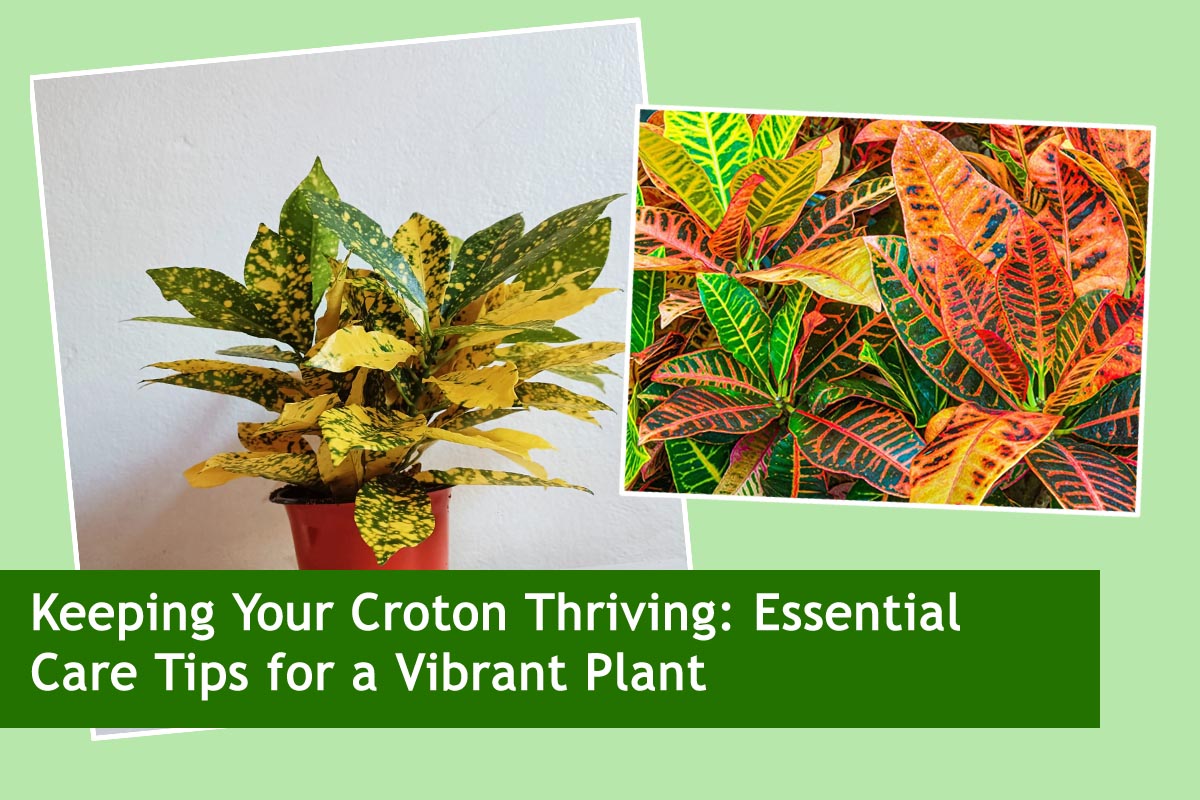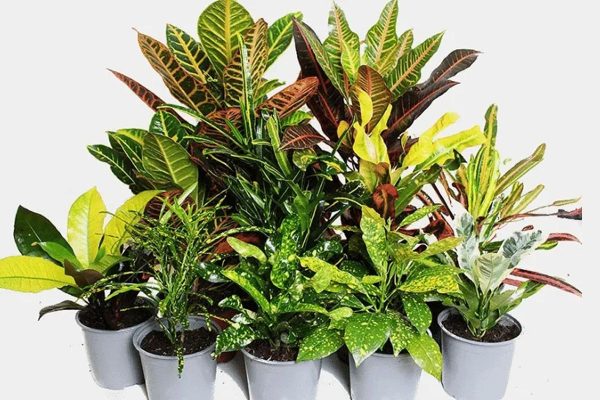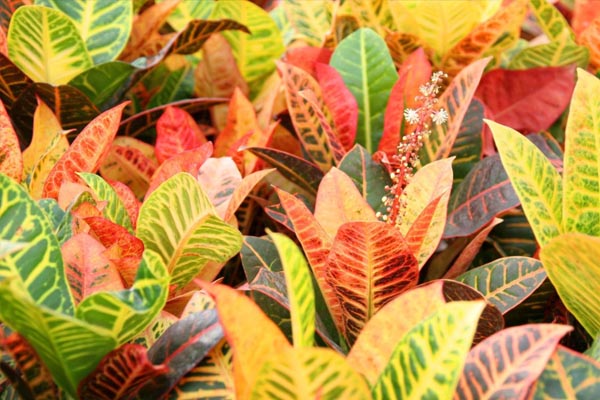
Keeping Your Croton Thriving: Essential Care Tips for a Vibrant Plant
Croton plants, known for their vibrant foliage and striking colors, are popular choices for indoor and outdoor gardens alike. With their glossy leaves splashed with hues of green, yellow, orange, and red, they add a burst of color and personality to any space. However, to keep your Croton thriving and looking its best, it requires proper care and attention. In this guide, we’ll explore essential tips to ensure your Croton plant flourishes.
Understanding Your Croton Plant:
Before delving into care tips, it’s essential to understand the basic characteristics of Croton plants. Crotons (Codiaeum variegatum) are native to tropical regions like Indonesia, Malaysia, and the Pacific Islands. They thrive in warm, humid environments and are sensitive to cold temperatures. Typically grown as houseplants in cooler climates, Crotons prefer bright, indirect sunlight and well-draining soil.

Croton Plant Care Tips
Light Requirements:
Croton plants require ample sunlight to maintain their vibrant colors. Place your Croton in a location that receives bright, indirect sunlight for at least six hours a day. Avoid direct sunlight, as it can scorch the leaves. If your Croton isn’t getting enough light, its foliage may become dull, and new growth may be stunted.
Also Read This : Reviving Yellowing Mogra Leaves: Unlock the Secret to Blossoming Beauty in Your Pot!
Watering Routine:
Finding the right balance of water is crucial for Croton care. Water your Croton thoroughly when the top inch of soil feels dry to the touch. Ensure that the pot has proper drainage to prevent waterlogging, which can lead to root rot. During the growing season (spring and summer), your Croton may require more frequent watering, while in the dormant season (fall and winter), it will need less water.
Humidity Levels:
Croton plants thrive in humid environments. To increase humidity levels, mist your Croton’s leaves regularly with a spray bottle filled with water. Alternatively, place a tray filled with pebbles and water beneath the plant’s pot to create a humid microclimate. Avoid placing your Croton near drafts or heating vents, as dry air can cause its leaves to dry out and curl.
Also Read This : Pre and Post-Fertilization Rituals: Essential Steps for Optimal Plant Health
Temperature Considerations:
Maintaining the right temperature is crucial for Croton plant health. These tropical plants prefer temperatures between 60°F to 80°F (15°C to 27°C). Avoid exposing your Croton to temperatures below 50°F (10°C), as it can lead to leaf drop and cold damage. During the winter months, protect your Croton from cold drafts by placing it away from windows and doors.

Soil and Potting:
Use a well-draining potting mix specifically formulated for tropical plants when repotting your Croton. Ensure that the pot has drainage holes to prevent water from accumulating at the roots. Repot your Croton annually in the spring if it has outgrown its current container. Choose a pot that is one size larger than the current one to allow room for growth.
Also Read This : Mastering Green Chilli Cultivation: Tackling 5 Common Issues at Home
Pruning and Maintenance:
Regular pruning helps maintain the shape and health of your Croton plant. Remove any dead, damaged, or yellowing leaves to encourage new growth. Use clean, sharp scissors or pruning shears to make clean cuts and prevent the spread of disease. You can also pinch back leggy growth to encourage bushier growth.
Fertilizing Routine:
Feed your Croton plant with a balanced liquid fertilizer diluted to half strength every two to four weeks during the growing season. Avoid overfertilizing, as it can lead to salt buildup in the soil, causing root damage. During the dormant season, reduce fertilization to once a month or suspend it altogether until new growth resumes in the spring.
Also Read This : Thriving from Trimmings: 7 Houseplants Propagated Easily from Stem Cuttings
Pest Management:
Keep an eye out for common pests that can affect Croton plants, such as aphids, mealybugs, scale insects, and spider mites. Inspect your plant regularly for signs of infestation, such as yellowing leaves, sticky residue, or webbing. Treat any infestations promptly with insecticidal soap or neem oil, ensuring thorough coverage of both the upper and lower leaf surfaces.
Also Read This : Summer Fertilization: Timing and Techniques for Optimal Results
With proper care and attention, your Croton plant can thrive and become a stunning focal point in your home or garden. By understanding its light, water, humidity, temperature, soil, and maintenance requirements, you can ensure that your Croton remains healthy and vibrant year-round. Remember to observe your plant closely and adjust your care routine as needed to meet its evolving needs. With a little love and attention, your Croton will reward you with its beautiful foliage and brighten up your living space.




